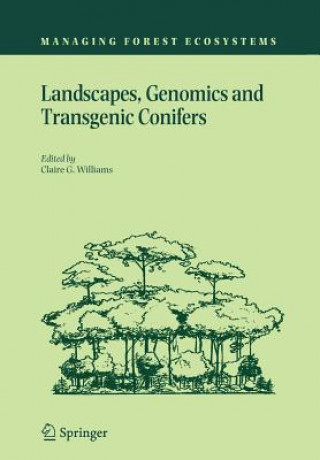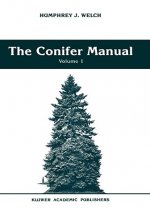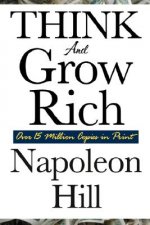
Kod: 01975215
Landscapes, Genomics and Transgenic Conifers
Autor Claire G. Williams
What is the future of genetically modified (or transgenic) conifer plantations? The content of this edited volume Landscapes, Genomics and Transgenic Conifers addresses this question directly - and indirectly - using language draw ... więcej
- Język:
 Angielski
Angielski - Oprawa: Miękka
- Liczba stron: 262
Wydawca: Springer, 2010
- Więcej informacji o książce

208.51 €

Dostępna u dostawcy w małych ilościach
Wysyłamy za 10 - 14 dni
Potrzebujesz więcej egzemplarzy?Jeżeli jesteś zainteresowany zakupem większej ilości egzemplarzy, skontaktuj się z nami, aby sprawdzić ich dostępność.
Dodaj do schowka
Zobacz książki o podobnej tematyce
-

Conifer Manual
229.14 € -

Manual of Cultivated Conifers
22.03 € -17 % -

Landscape Genetics - Concepts, Methods, Applications
74.96 € -2 % -

Pierre-Joseph Redouté: The Book of Flowers
26.05 € -15 % -

Spell of the Sensuous
17.10 € -10 % -

Numerals and Arithmetic in the Middle Ages
231.35 € -

Rhetorics of Religion in American Fiction
134.14 € -

Thunder Doesn't Live Here Anymore
36.82 € -

Lyra's Oxford
10.05 € -22 % -

Abba The Quiz Book
10.46 € -6 % -

King of Scars
12.67 € -1 % -

Conifers
141.99 € -6 % -

Radical Candor
8.54 € -14 % -

Microsoft Flight Simulator 2020
12.87 € -2 % -

Wolf Hall
9.35 € -21 % -

Cellular and Molecular Biology of Filamentous Fungi
251.98 € -

Fire in Ecosystems of Boreal Eurasia
229.14 € -

Tenth Muse
137.16 € -

Indoor Air Pollution
67.82 € -

Ecology and Biogeography of Pinus
73.86 € -

EISS Yearbook 1980-1981 Part II / Annuaire EISS 1980-1981 Partie II
58.56 € -

Gustave Dore (1832-1883)
45.58 € -18 % -

Financial Management and Comptroller - Scholar's Choice Edition
19.31 € -

Pinhoe Egg
9.85 € -15 % -

L'AVI OS TÈ UN SECRET
14.88 € -10 % -

Rozprávka o škriatkovi menom Pe-Pe
7.74 € -23 % -

LEGO® City - Malblock
6.03 € -

Madame Pylinska et le secret de Chopin
9.45 € -14 %
Podaruj tę książkę jeszcze dziś
- Zamów książkę i wybierz "Wyślij jako prezent".
- Natychmiast wyślemy Ci bon podarunkowy, który możesz przekazać adresatowi prezentu.
- Książka zostanie wysłana do adresata, a Ty o nic nie musisz się martwić.
Więcej informacji o Landscapes, Genomics and Transgenic Conifers
Za ten zakup dostaniesz 524 punkty
 Opis
Opis
What is the future of genetically modified (or transgenic) conifer plantations? The content of this edited volume Landscapes, Genomics and Transgenic Conifers addresses this question directly - and indirectly - using language drawn from policy, forest history, genomics, metabolism, pollen dispersal and gene flow, landscape ecology, evolution, economics, technology transfer and regulatory oversight. Although the book takes its title from a Nicholas School Leadership forum held November 17-19, 2004 at Duke University, its de novo contents move past the forum s deliberations. The result is a trans-disciplinary book composed of 14 chapters written by a total of 31 authors working in North America, South America, Europe and Africa. §The book is written for policy experts, life scientists, government and business leaders, biotechnology writers and activists. Few decision-makers realize the unprecedented degree to which transgenic technology is now possible for forests on a commercial scale. Only a handful of the 550 living conifer species is used for commodity value and even fewer species are being developed for transgenic plantations. Transgenic field trials started within the last decade but no transgenic pine plantations exist in 2005. But emergence of transgenic forest trees is still so recent that dialogue about the pros and cons is confined to the scientific community. And dialogue must move out into the public domain. §So little opportunity remains for opening public dialogue. The pursuit of transgenic research for forest trees is principally corporate so novel forest tree phenotypes are created as a means to increase shareholder value for investor companies. And while potential benefits will accrue to shareholders, ecological risks for certain transgenic traits are likely to be shared due to long-distance gene flow and inadequate bioconfinement measures. So this is a question riddled with tension. Without public deliberation, we should expect alienation of several interest groups. Alienation will lead to heightened clashes in the public policy arena or even radical environmental action. But how to move dialogue on transgenic forests forward? One must re-frame the issues behind transgenic conifer plantations. §The goal of this volume is to provide content for public deliberations about the genetic composition of future forests. Its Section I is composed of provocative and opposing views on the question of transgenic conifer plantations. Sections II and III follow with research advances on relevant conifer genomics and ecology research, respectively. Section IV forecasts rates of technology adoption for different case studies. Finally, Section V compares the status of regulatory oversight of transgenic forest trees between Canada and the United States. But will the book fulfil its goal? The burden of the answer lies with its readers. Will readers act or will transgenic forests be seen as too remote or simply too rural to bother with the angst of public deliberation?The book is written for policy experts, life scientists, government and business leaders, biotechnology writers and social activists. Few decision-makers realize the unprecedented degree to which transgenic technology is now possible for forests on a commercial scale. Only a handful of the 550 living conifer species is used for commodity value and even fewer species are being developed for transgenic plantations. Transgenic field trials started within the last decade but no transgenic pine plantations exist in 2005. But emergence of transgenic forest trees is still so recent that dialogue about the pros and cons is confined to the scientific community. And dialogue must move out into the public domain.§The goal of this volume is to provide content for public deliberations about the genetic composition of future forests. Its Section I is composed of provocative and opposing views on the question of transgenic conifer plantations. Sections II and III follow with research advances on relevant conifer genomics and ecology research, respectively. Section IV forecasts rates of technology adoption for different case studies. Finally, Section V compares the status of regulatory oversight of transgenic forest trees between Canada and the United States.What is the future of genetically modified (or transgenic) conifer plantations? The content of this edited volume Landscapes, Genomics and Transgenic Conifers addresses this question directly - and indirectly - using language drawn from policy, forest history, genomics, metabolism, pollen dispersal and gene flow, landscape ecology, evolution, economics, technology transfer and regulatory oversight. Although the book takes its title from a Nicholas School Leadership forum held November 17-19, 2004 at Duke University, its de novo contents move past the forum s deliberations. The result is a trans-disciplinary book composed of 14 chapters written by a total of 31 authors working in North America, South America, Europe and Africa. §The book is written for policy experts, life scientists, government and business leaders, biotechnology writers and activists. Few decision-makers realize the unprecedented degree to which transgenic technology is now possible for forests on a commercial scale. Only a handful of the 550 living conifer species used for commodity value and even fewer species are being developed for transgenic plantations. Transgenic field trials started within the last decade but no transgenic pine plantations exist in 2005. But emergence of transgenic forest trees is still so recent that dialogue about the pros and cons is confined to the scientific community. And dialogue must move out into the public domain. §The goal of this volume is to provide content for public deliberations about the genetic composition of future forests. Its Section I is composed of provocative and opposing views on the question of transgenic conifer plantations. Sections II and III follow with research advances on relevant conifer genomics and ecology research, respectively. Section IV forecasts rates of technology adoption for different case studies. Finally, Section V compares the status of regulatory oversight of transgenic forest trees between Canada and the United States. But will the book fulfil its goal? The burden of the answer lies with its readers. Will readers act or will transgenic forests be seen as too remote or simply too rural to bother with the angst of public deliberation?
 Szczegóły książki
Szczegóły książki
Kategoria Książki po angielsku Economics, finance, business & management Business & management Management & management techniques
208.51 €
- Pełny tytuł: Landscapes, Genomics and Transgenic Conifers
- Autor: Claire G. Williams
- Język:
 Angielski
Angielski - Oprawa: Miękka
- Liczba stron: 262
- EAN: 9789048169863
- ISBN: 9048169860
- ID: 01975215
- Wydawca: Springer
- Waga: 494 g
- Wymiary: 240 × 160 × 15 mm
- Data wydania: 23. November 2010
Ulubione w innej kategorii
-

Millionaire Fastlane
26.46 € -

Extreme Ownership
23.24 € -24 % -

The Coaching Habit
17.50 € -3 % -

High Output Management
16.70 € -12 % -

Hooked
12.87 € -22 % -

Principles
26.05 € -21 % -

Ego Is the Enemy
11.97 € -30 % -

The Making of a Manager
15.09 € -29 % -

Inspired - How to Create Tech Products Customers Love, 2nd Edition
29.98 € -2 % -

Professional Product Owner, The
33.10 € -2 % -

7 Habits of Highly Effective People
22.23 € -

The Daily Stoic
12.97 € -29 % -

Devil Take the Hindmost
15.99 € -24 % -

Think and Grow Rich
11.46 € -

Obstacle Is the Way
22.03 € -21 % -

Stillness Is the Key
13.27 € -10 % -

Dare to Lead
15.19 € -13 % -

12 Week Year - Get More Done in 12 Weeks than Others Do in 12 Months
18.51 € -28 % -

Effective Change Manager's Handbook
59.57 € -5 % -

Unlimited Memory
15.99 € -23 % -

Overcoming the Five Dysfunctions of a Team - A Field Guide for Leaders, Managers and Facilitators
22.13 € -26 % -

Accelerate
17.70 € -22 % -

The Innovator's Dilemma
27.36 € -4 % -

Dichotomy of Leadership
26.76 € -13 % -

Radical Candor: Fully Revised & Updated Edition
22.33 € -

Wooden on Leadership
24.14 € -28 % -

Spiral Dynamics - Mastering Values, Leadership and Change
36.12 € -7 % -

Sources of Power
28.67 € -15 % -

Leading Change, With a New Preface by the Author
26.86 € -17 % -

Influence
13.88 € -1 % -

Collaborating with the Enemy: How to Work with People You Dont Agree with or Like or Trust
17 € -26 % -

Toyota Kata: Managing People for Improvement, Adaptiveness and Superior Results
30.78 € -15 % -

It's the Manager
38.84 € -4 % -

Principles of Scientific Management
7.44 € -15 % -

John D. Rockefeller on Making Money
8.85 € -21 % -

Art of People
10.96 € -23 % -

Smart Choices
27.36 € -23 % -

BPMN Quick and Easy Using Method and Style
35.21 € -

Fish!
10.66 € -20 % -

Essentials of Project and Systems Engineering Management 3e
218.07 € -

Building and Sustaining a Coaching Culture
58.76 € -2 % -

Navy SEAL Art of War
19.21 € -26 % -

Slack
14.98 € -12 % -

Fundamentals of Management, Global Edition
96.50 € -

Spiral Dynamics in Action - Humanity's Master Code
25.15 € -27 % -

HBR Essential 20-Minute Manager Collection (5 Books) (HBR 20-Minute Manager Series)
46.89 € -22 % -

Fierce Leadership
11.26 € -28 % -

Value - The Four Cornerstones of Corporate Finance
33 € -

Techniques for Coaching and Mentoring
70.84 €
Osobní odběr Bratislava a 2642 dalších
Copyright ©2008-24 najlacnejsie-knihy.sk Wszelkie prawa zastrzeżonePrywatnieCookies


 Vrácení do měsíce
Vrácení do měsíce Zdarma od 49.99 €
Zdarma od 49.99 € 02/210 210 99 (8-15.30h)
02/210 210 99 (8-15.30h)